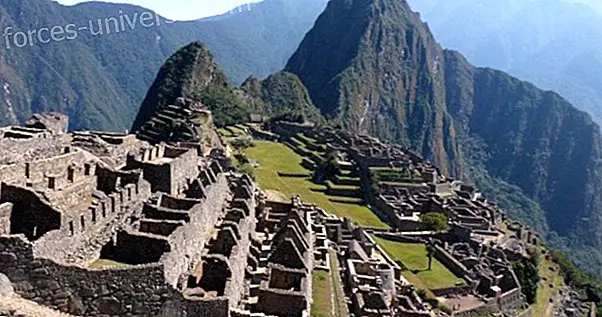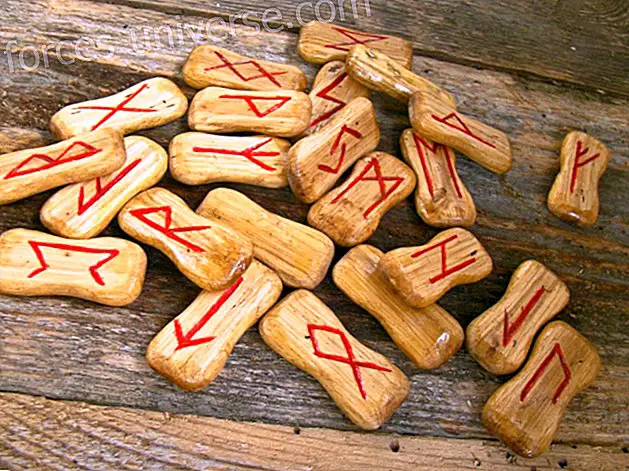Star showers or meteor showers are one of the most beautiful shows in the night sky. They appear as light strokes of short duration on the sky, colloquially known as shooting stars .
However, these are not true stars like our Sun or Sirius, for example. The shooting stars or meteors, are the remains of comets and asteroids that succeed to pass near the Earth, and that because of the powerful gravitational attraction of the Sun, they fragment into pieces whose size ranges between 1 micrometer - the millionth part of a metro- and some kilometers.

The origin of star showers
These debris are dispersed in the orbit of the comet or asteroid and the Earth, as it passes through space, is found periodically. When our planet reaches a point where the density of fragments is very large, so-called star rains or meteor showers arise.
The light trace they leave is a product of the ionization of atmospheric gases and since they enter the atmosphere at high speed - about 40-70 km / s on average - the friction heats and vaporizes them before they reach the surface, except in few occasions in which the fragment has a considerable size.
Although numerous star showers occur regularly every year and some have been recorded since ancient times by numerous towns, the relationship between them and comets was not always known.
For a long time it was believed that they were atmospheric phenomena, until astronomers realized, in the 19th century, that there was a link between rains and debris left by comets.
The main rains
It is estimated that up to 50 star rains occur throughout the year, which are classified according to their activity in major rains and minor rains .
A major rain of stars has a count of more than 10 meteors / hour under ideal conditions of observation, which means very dark skies, clear, far from the light pollution and with the Low moon on the horizon.
Star showers are named according to the constellation where the trajectories converge, which is no more than an effect originated by the perspective. This point is the radiant .
For example, the Perseids, popularly known as Tears of St. Lawrence, have their radiance in the northern constellation of Perseus, the Lenenids have it in Leo and so on.
Following is a brief description of the major star rains, including the dates of appearance and the associated comet or asteroid:
Lost
The popular tears of San Lorenzo, are visible in the summer of the northern hemisphere, between July 16 and August 24. The maximum occurs between the 10-day of San Lorenzo and August 13.
It is one of the most spectacular star rains, with a rate of between 50 and 100 meteors / hour and great possibilities of getting to see a warm: an especially massive meteor that leaves a spectacular wake, accompanied Ada even by an explosion noise.
Since the weather is very favorable, this rain of stars is an excellent opportunity to go out in the open and contemplate the wonders of the night sky.
The Perseids are caused by the debris of 109P / Swift-Tuttle, a comet whose period is 133 years, discovered in 1862. The next visit is expected by 2126, when it can be appreciated back to the naked eye It is a fairly large comet and the calculations predict that it will orbit very close to Earth by 4479.

Although the probability of impact is small, because the comet is about 26 km in diameter according to NASA, it is one of the most massive objects that pass near the Earth's orbit.
With an estimated speed of 60 km / s, added its large size, - much larger than that of the object that caused the extinction of the dinosaurs -, it is not surprising that astronomers worry about the dangers of a possible excessive approach.
Leonidas
They are named for their radiant located in the constellation Leo. They are present from November 15 to 21, the maximum being around 17-18 of the same month. The activity of the Leonids is quite variable, almost always between 10 and 15 meteors / hour.
But in November 1833, the Leonids went from a shower of stars to a true storm, with thousands of meteors per minute, counted on the east coast of the United States.
This aroused the interest of astronomers to find out the true origin of meteors. Some years later, the relationship between this rain and the Tempel-Tuttle comet was discovered, discovered in 1866. The orbits of the comet and the Leonids are one.
In 1966 there was another meteor storm coming from the Leonids, again with thousands of meteors per minute.
Geminids
Another spectacular star shower in the constellation of Gemini, happens from 7 to 17 December approximately, with its maximum around 13 to 14. Although slower than in other rains, the hourly meteor rate exceeds 100. This It makes it one of the most important rains due to its activity.
Unlike the other rains, which are caused by comets, the Geminids are the remnants of the asteroid 3200 Phaeton . They are also recent, barely dating back to the 19th century, while the Perseids, for example, have been registered for centuries.
The asteroid Phaeton, the father of the Geminids, is about 5 km in diameter and some features in common with comets, although he has not been seen to develop scalp.
It was discovered in 1983 and the Solar System is still around. Together with the comet Swift-Tuttle, it is considered another dangerous object for the Earth due to the proximity of its orbits and a small, although not negligible, collision probability.
Quadrantids
With its radiance in the northern constellation of the Boyero, the Quadrantids are the celestial spectacle from the end of the year until the first week of January. The maximum is expected on January 3-4, and although it is short-lived, it is one of the most active rains: more than 100 meteors / hour.
In addition, the quadrantids meteors are exceptionally bright, and can be seen even during twilight if the conditions are appropriate. The name Quadrántidas comes to them because their radiant is in the already disappeared constellation Quadrans Muralis .
The origin of the Quadrantids is still uncertain. Currently, most astronomers attribute it to a 3 km diameter asteroid, called 2003 EH1, an object with hybrid characteristics between asteroid and comet discovered in 2003.
Orionids
They come from the constellation Orion, being visible during the month of October, with the maximum near October 21. The Orionids rate is not as high as that of other major rains, barely between 10-20 meteors / hour, but green-yellow meteors are showy.
Moreover, the Orionids are the remnants of the famous Halley's comet, the most studied comet by mankind. The view of the Orionids is accompanied by the spectacular October sky, full of stars of great magnitude, nebulas and planets, a spectacle really worth seeing.
Lyrids
The radiant of the Líridas is in constellation Lira, close to the beautiful star of the first magnitude Vega. It is a moderate rain that can be admired from April 16 to 25, with a rather moderate rate of 10-20 meteors / hour, although in some years it is much higher.
The maximum of this rain of stars occurs on April 22, this being the best day to plan the observation. The Líridas come from comet 1861 I Thatcher, discovered in 1861 and whose period is quite large: 415 years.
Some of the fragments left by Thatcher are so large and fast, that sometimes they do not disintegrate completely as they pass through the atmosphere and pass through them like fireballs. These are racing cars and the fragments that manage to land are called meteorites .
How to enjoy a shower of stars
Enjoying the rains of stars is very simple, because it does not require any instrumentation. Binoculars and telescopes would only limit the field of vision.
The smartphone is a good company, as there are applications that provide important data about the location of the moon, constellations and other celestial bodies, as well as the rains.
For effective observation, carry a reclining chair or lie directly on the floor, as the radiant must be high enough above the horizon. The place must be dark, it is best that it is at a certain height. Once located, you have to wait for the eyes to get used to the darkness .
From there you can wander the view across the sky, since meteors can arise from anywhere. If the moon is high in the sky, it is better to wait for it to go down, otherwise much of the rain will be lost.

It is also important to take into account that the best hours to appreciate the brightest and fastest meteors are after midnight and until dawn. Now follow these recommendations and enjoy an unforgettable starfall show:
- Choose a quiet place away from artificial light sources.
- Wait until the moon is low on the horizon.
- Wear blankets, comfortable clothes and a coat.
- Put on insect repellent if you are going to be in the open
- A thermos with coffee, tea or hot chocolate is essential.
- Don't forget to have a flashlight on hand
- If you are going to photograph the use of a tripod and self-timer is mandatory.
Observing the night sky is an excellent opportunity to marvel and connect with nature, with the universe and the divine. So watch for the next shower of stars, to enjoy the show in the company of family and friends.
AUTHOR : Fanny Zapata, editor in the big family of hermandadblanca.org
References:
- American Meteor Society. Major Meteor Showers. Recovered from: amsmeteors.org
- Institute of Astrophysics of the Canary Islands. Guide to observe the perseidas 2019. Recovered from: iac.es.
- Maran, S. 2013. Astronomy for Dummies. L Books.
- Wikipedia Meteor Shower Recovered from: en.wikipedia.org






